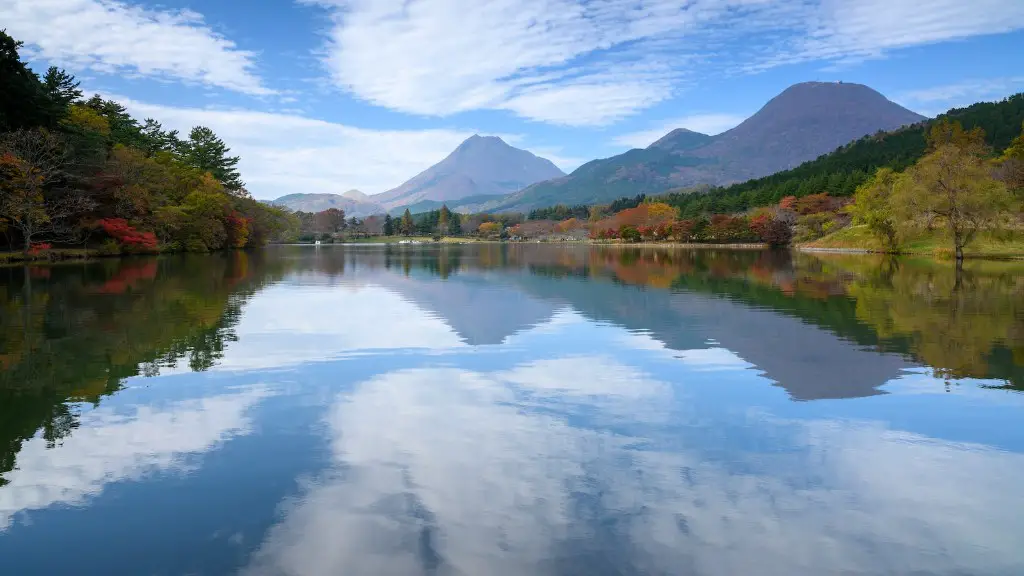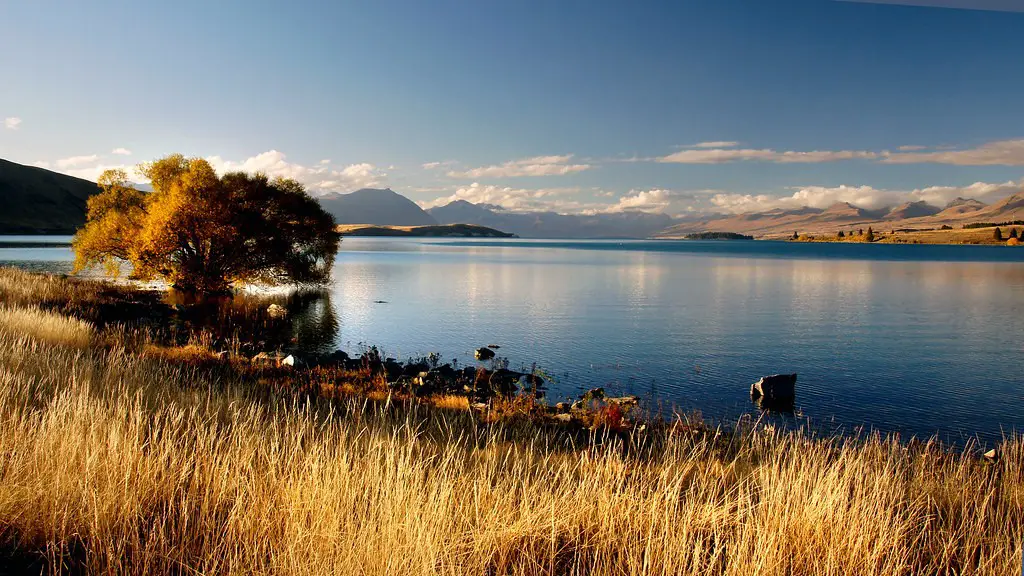Global Warming and Lake Michigan Water Levels
Lake Michigan is the second largest of the Great Lakes, and its water levels are actively monitored. Recently, it has been noted that Lake Michigan’s water levels are beginning to rise, raising some concerns about the potential for flooding and other environmental damage. This is due to a number of factors, but, in particular, the effect of climate change must be examined.
The rise in Lake Michigan’s water levels is due in large part to an increase in the average temperatures of the water and air over the last few decades. This is due to a combination of natural cycles and human-caused climate change, both of which cause the evaporation of more water from the lake and an influx of warmer water temperatures. Additionally, climate change is causing more precipitation in the area, meaning more rainwater is entering the lake as well.
Another factor contributing to the rise in Lake Michigan’s water levels is the increasing amount of freshwater being brought in from the Chicago River, which is being piped in from Lake Michigan to provide drinking water for the city.
This has led experts to warn about the potential consequences of Lake Michigan’s rising water levels. Chief among these is the threat of flooding in areas around the lake, especially in Michigan’s coastal communities. Additionally, the increased levels of water could also cause loss of natural habitat and degradation of beaches. Some experts have speculated that the lake could also experience an increase in the spread of invasive species.
The best way to address the situation is to reduce emissions of carbon dioxide and other greenhouse gases, and mitigate the effects of human-caused global warming. This can be done through a number of different techniques, such as switching to renewable energy sources, increasing energy efficiency, and reducing energy consumption.
In addition, it is important to make sure that measures are in place to protect residents, infrastructure, and the environment from the increased water levels. This includes the implementation of improved flood mitigation strategies, such as better drainage systems, stronger seawalls, and measures to reduce soil erosion.
As climate change has allowed for Lake Michigan’s water levels to rise, it is imperative that we take action now before the situation becomes more dire. By taking steps to reduce emissions of greenhouse gases, adopting better stormwater management strategies, and investing in flood protection measures, we can ensure that the lake is able to remain healthy, while protecting the safety of those who live around it.
Lakeshore Erosion
The rise in the level of Lake Michigan’s waters can have a significant impact on the condition of the lake’s shoreline. Increased water levels can lead to higher wave energy, which can quickly lead to lake shore erosion. The rise in water levels can also cause the lake’s waters to spread onto land that had been previously dry. This can lead to issues such as increased soil erosion, which can damage or destroy land that is important to communities or the environment.
Erosion control is an important way of mitigating the impacts of higher lake levels. This can involve natural methods such as planting vegetation to help slow down the wave energy, or adding hard objects like large stones or boulders to the lake’s shoreline. Additionally, there are also artificial measures that can be taken, such as installing bulkheads or breakwaters, which are physical barriers built onto the lake’s shore.
Another important step that can be taken is to develop an erosion control plan. This document outlines a plan of action to monitor and address shoreline erosion in order to protect the shoreline and any infrastructure that may be at risk. The plan should take into account any existing infrastructure, natural features, and any other features that may be impacted by the erosion.
Erosion control is an important way to mitigate the effects of higher lake levels on the shoreline of Lake Michigan. By developing an erosion control plan and taking steps to reduce wave energy and prevent wave erosion, we can ensure that the shoreline of the lake remains safe and healthy.
Effects On The Ecosystem
The effects of Lake Michigan’s higher water levels can also extend far beyond its shores. For example, higher water levels can affect the fish populations in the lake, due to the changes in water temperature, oxygen levels, and the availability of food. Additionally, the increased water levels can cause changes to deeper areas of the lake, which can lead to the destruction of habitats and a decrease in biodiversity.
The effects of higher water levels can also be felt in other areas, such as lakes river systems. The increased water levels can cause flooding and other issues in these systems, negatively impacting everything from fish and other aquatic life, to crops, recreation, and drinking water.
The best way to help mitigate the effects of higher lake levels on the ecosystem is to take steps to reduce the impacts of climate change. This can involve steps such as reducing one’s carbon footprint, adopting better energy efficiency and renewable energy sources, and reducing energy consumption. Additionally, it is important to make sure that any development near the lake is done responsibly, so as not to affect the lake or its surroundings.
By taking action now to reduce the effects of climate change, we can also help to reduce the impacts of Lake Michigan’s rising water levels on its ecosystem. This can help to protect the lake’s aquatic life, the creatures that depend on the lake, and all of the humans who call the lake their home.
Adaptation Strategies
As Lake Michigan’s water levels continue to rise, it is important to develop adaptation strategies to help ensure that the lake and its surroundings are able to withstand the changes. One way to do this is to create an adaptive water management plan, which outlines steps to mitigate the impacts of climate change on the lake.
This plan should involve measures to reduce the risk of flooding, such as raising seawalls or other barriers. Additionally, the plan should include steps to reduce the impacts of higher water levels on the shoreline, such as improving stormwater management and erosion control policies. The plan can also include measures to protect property, infrastructure, and the environment from greater threats in the future.
It is also important to increase public awareness about climate change and its potential impacts. This includes providing information about the changes that are occurring in the Great Lakes, and how people can be part of the solution. Education on issues like conservation, renewable energy, and efficient water use can also help to reduce the impacts of greater water levels.
By developing a comprehensive adaptive water management plan and increasing public awareness of climate change and its impacts, we can help ensure that Lake Michigan is able to continue to thrive, even as its water levels rise.
Economic Impacts
The rising level of Lake Michigan’s waters can also have significant economic impacts on the region. For instance, higher water levels can threaten the properties of those who live near the lake, as flooding can cause water damage to both homes and businesses. Additionally, higher water levels can lead to increased costs for infrastructure, such as seawalls and other mitigation measures.
The rise in water levels can also affect local industry. For example, higher water levels can lead to a decrease in the availability of freshwater for businesses, and the increased wave energy can make recreational activities, such as boating and fishing, more difficult. Finally, the rise in water levels could threaten the livelihoods of those who depend on the lake, such as commercial fishermen.
The best way to address the economic impacts of increased water levels is to take steps to reduce the causes of climate change. Additionally, it is important to ensure that those living and working around the lake are protected with adequate infrastructure. Finally, it is important to invest in measures that can help to reduce the economic impacts of higher water levels, such as providing economic assistance to those affected or developing policies that reward responsible business practices.
By taking steps to reduce the impacts of climate change and protect those living and working around Lake Michigan, we can help to ensure that the lake’s waters remain healthy and its economy remains strong.
Conclusion
Rising water levels in Lake Michigan pose a serious threat to the lake, its inhabitants, and its surroundings. By reducing emissions of greenhouse gases, developing better stormwater management strategies, and investing in protective measures, we can mitigate the impacts of higher water levels; and, by educating ourselves and the public, we can help ensure that Lake Michigan remains healthy, safe, and economically strong.




